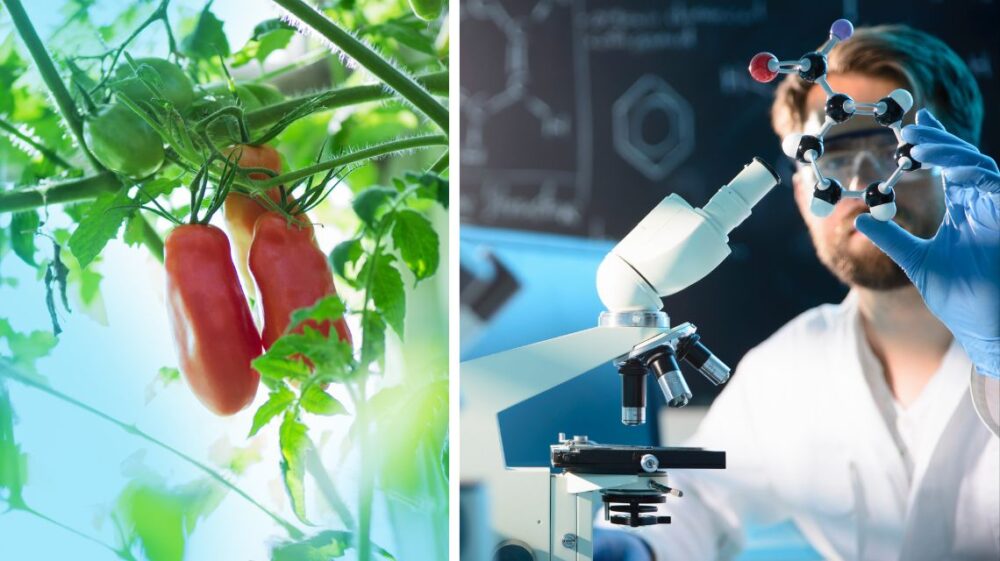A STUDY CONDUCTED BY ENEA AND THE UNIVERSITY OF TUSCIA HAS REVEALED THAT THE BY-PRODUCTS OF TOMATO PROCESSING CONTAIN A HIGH CONCENTRATION OF ANTIOXIDANT MOLECULES. THESE ARE KNOWN FOR THEIR ROLE IN THE PREVENTION OF SERIOUS DISEASES AND IN THE ACTION AGAINST PREMATURE AGING.
Antioxidants, what are they
The antioxidants they are good for human health because they protect cells from damage caused by free radicals. That is, unstable molecules produced by the body during metabolism or due to external factors such as pollution and UV radiation.
Free radicals can cause oxidative stress, which damages cells, proteins and DNA, promoting aging and chronic diseases such as cancer and cardiovascular problems.
Antioxidants block free radicals, reducing their damage. Among the most common antioxidants are vitamin C, vitamin E, flavonoids and polyphenols.
These substances they protect the body, improve the immune system, reduce inflammation and help slow down aging, preventing diseases related to oxidative stress.
The project by ENEA and the University of Tuscia
A study conducted byAENEAS and fromUniversity of Tusciawho coordinated the project, highlighted the high content of beneficial molecules in tomato processing residues.
The results, published in the journal Food Chemistryhave analyzed for the first time the nutritional and functional properties of the pomace of the tomato, i.e. the peel and seeds (which represent approximately 20% of the weight), coming from the varieties San Marzano, Sun Black e Colorless Fruit Epidermis. The latter is characterized by a transparent peel.
Tomato powder derived from waste could be used as a functional ingredient in numerous commercial foods, helping to significantly improve its nutritional profile.
«We have demonstrated that from these waste products it is possible to obtain a tomato powder that is nutritionally comparable to those on the market, but with a high content of antioxidant bioactive molecules – explains Maria Sulli of the ENEA Biotecnologie Green laboratory -. Such as flavonoids and anthocyanins, known for their effectiveness in preventing the onset of serious diseases and premature aging.”
The d.sa Maria Sulli she co-authored the study together with her colleague Gianfranco Direct and with Barbara Farinon, Martin Felli, Daniele V. Savatin, Andrea Mazzucato, Nicolò Merendino e Lara Costantini of the University of Tuscia (Viterbo).
Sun Black pomace stands out for its abundance of beneficial compounds
Among the pomace examined, that of Sun Black, with its typical purple pigmentation, stood out for the abundance of beneficial compounds, such as anthocyanins and flavonoids, with a percentage varying between 16.5% and 36.5%. compared to other varieties.
This richness makes her one promising functional addition to food products such as pasta, bread and biscuits, as it contributes antioxidants, fiber and minerals.
Nutritious and antioxidant tomato powders
Lara Costantinifrom the Laboratory of Cellular and Molecular Nutrition of the University of Tuscia and coordinator of the project, explained that «the tomato powders we obtain from pomace show important characteristics that could improve the nutritional and antioxidant profile of many foods on the market. We are currently working to analyze their integration into different foods and their functionality in vivo through a clinical trial.”
The use of waste products as biopesticides
The researchers also examined the effectiveness of extracts derived from the waste against the bacterium “Pseudomonas syringae” and the mushroom “Fusarium of grasses”known for the damage they cause to tomato crops.
Dr. Sulli underlined that, given the need for sustainable alternatives for control of phytopathogenic diseases in agriculture and considering the antimicrobial and antifungal activity of phenols, further studies will explore the use of waste products such as biopesticides.
Therefore, the ENEA scientist highlighted that «the accumulation of anthocyanins on the peel reduces the susceptibility of tomatoes to the Botrytis cinerea fungus, one of the most important post-harvest pathogens, ensuring a longer shelf life of this fruit».
The tomato is an excellent contributor to the circular economy
The tomato (Solanum lycopersicum L.) is one of the most widespread crops globally, with over 189 million tonnes produced in 2021, of which approximately 18 million come from the European Union. Italy, which produced 6.64 million tonnes in the same year, is the main European producer, accounting for 36.7% of total production in the EU.
Fundamental element of Mediterranean dietthe tomato can be consumed both fresh and processed. It is estimated that more than half of global production is destined for processing into products such as purees, sauces, purees, ketchup or canned tomatoes.
This processing generates millions of tons of byproducts that still contain numerous healthy molecules. These wastes could be re-evaluated as functional ingredients, contributing tocircular economy.
In fact, the tomato powder derived from waste could be used as a functional ingredient in numerous commercial foods, helping to significantly improve their nutritional profile.
The alternative use of tomato residues is part of the strategy Farm to Fork (F2F) of the European Commission, which aims to halve food waste by 2030.

